The only foolproof way to know if your turkey bird is cooked is by checking the internal temperature. I always rely on a meat thermometer because looks can be deceiving, and no one wants undercooked turkey. But where exactly should you put the thermometer in a turkey?
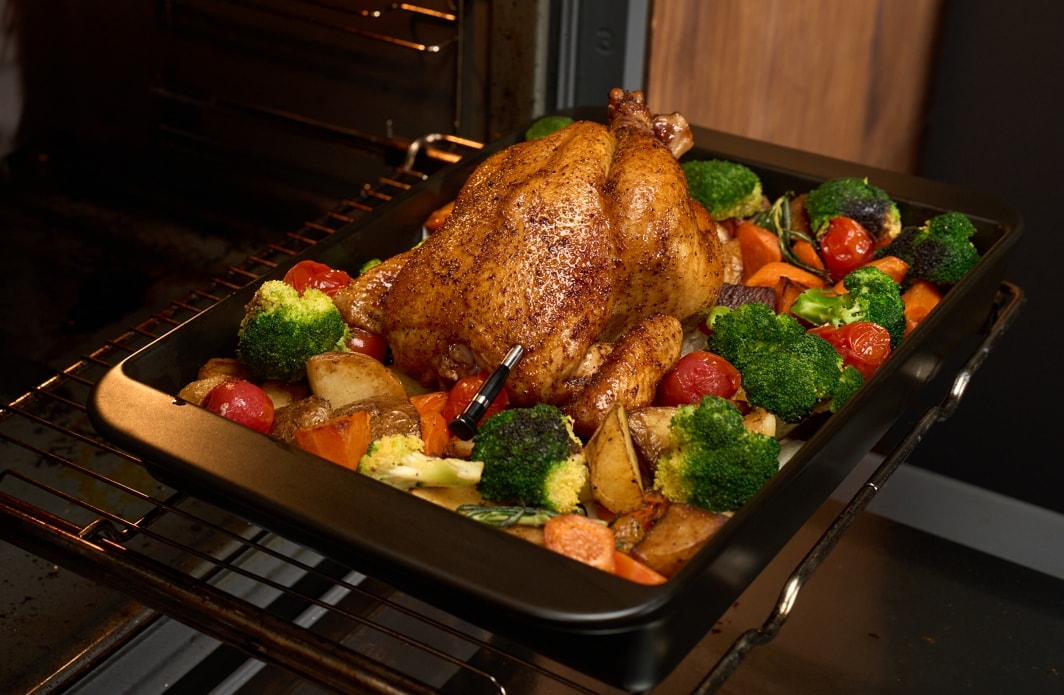
The proper placement of a meat thermometer in a turkey is essential because the bird contains both white meat (breast) and dark meat (thighs and legs), which cook for different temperatures.
So, let’s take the guesswork out of it and make sure you’re confident about where to put the thermometer in a turkey. But before that, there’s something you should know.
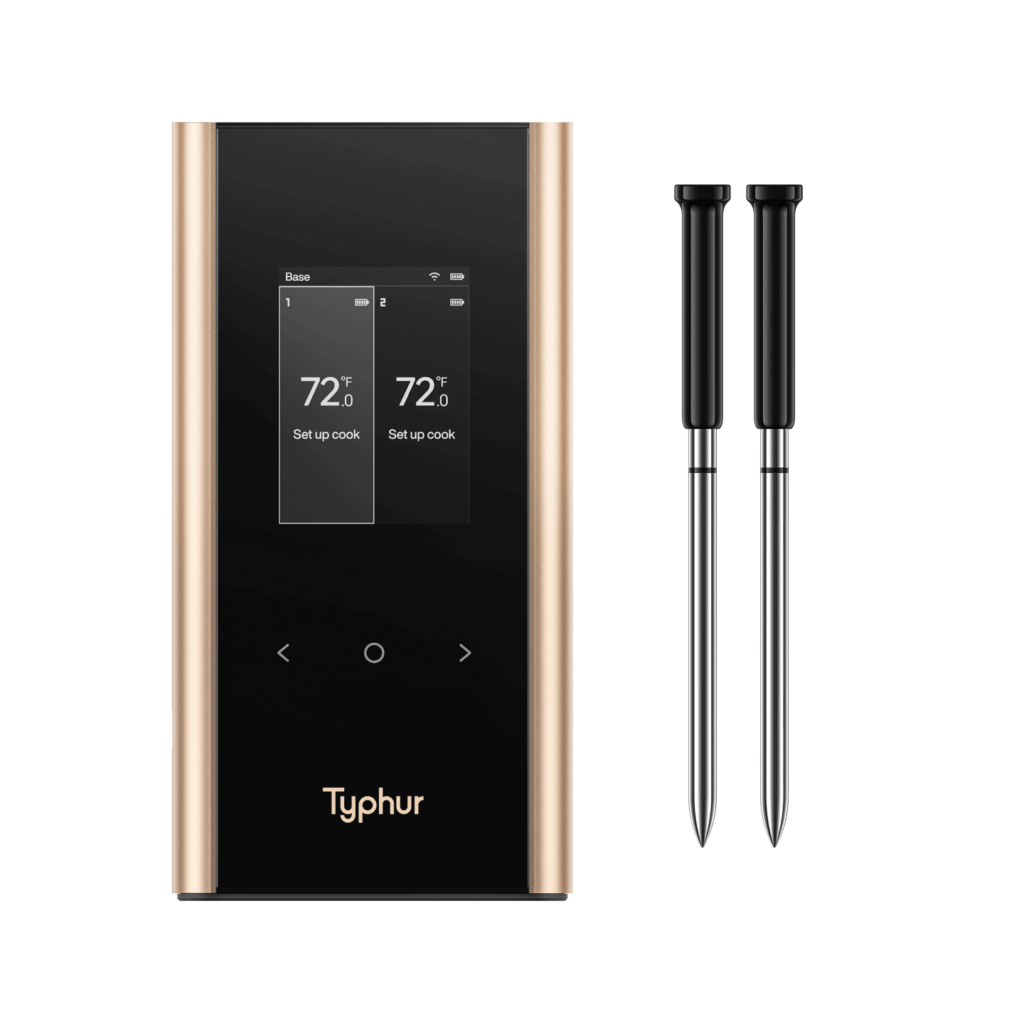
Long Range Wireless Meat Thermometer
“Using a meat thermometer is the only reliable way to tell if your turkey is cooked”
Many people rely on jiggling the legs or checking the color of the juices to determine whether the turkey is fully cooked or not. But those methods can be misleading and potentially put your guests at risk. The most accurate way to ensure your turkey is perfectly cooked is by using a meat thermometer to check the internal temperature.
So, what’s the best meat thermometer for turkey?
While the pop-up timers that come with some turkeys might seem convenient, they often miss the mark, leading to either undercooked or overcooked results. Using a reliable wireless meat thermometer makes the whole process so much easier. You just stick the probes in, set your target temp, and let it do the work. You can check the temperature on your phone and get an alert when the turkey is perfectly cooked.
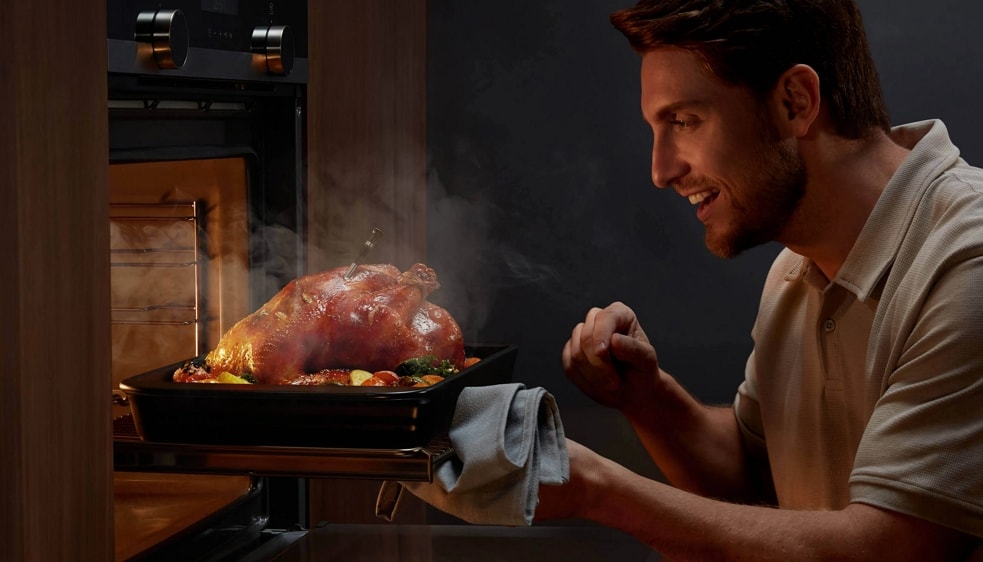
Where To Put The Thermometer in Turkey?
Ready for the best part? Whatever meat thermometer you are using, you should know how to place the thermometer in the turkey properly.
As I mentioned before, a turkey contains both white meat (breast) and dark meat (thighs), and each requires a different cooking temperature. So, you should check the temperature of the breast and the thighs.
To do this, use a wireless meat thermometer with an alarm, like the Typhur Sync Gold, which is oven-safe and wire-free. The best part is that it comes with multiple probes to monitor different parts of the meat.
To properly insert the probe in turkey, follow these steps:
- Estimate probe depth by holding it against the turkey breast. Pinch the spot you’ll insert.
- Insert the probe laterally near the neck cavity, parallel to the cutting board, until your pinch marks.
- Keep the tip 1/2 to 1 inch from the internal cavity.
- Using the second probe, insert it into the thigh between the leg and the body.
- Set alarms to 157°F for breast, and 175°F for thigh, and avoid opening the oven until the alarm goes off.
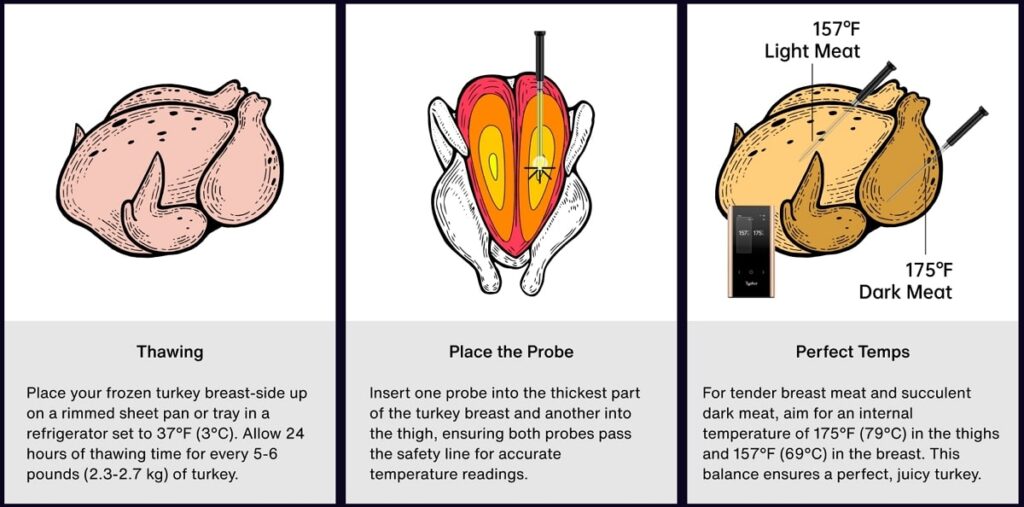
Related: How to thaw a turkey?
If you don't have a second probe to work with, make sure to temp that breast! Because the breast is the one that will dry out if overcooked, as it has less fat compared to dark meat.
What Temperature Should Your Turkey Be?
We’ve all been told to cook turkey at 165°F (74°C), but that’s too high! Instead, pull your turkey breast at 157°F (69°C) for moist, flavorful meat.
Why? People misunderstand USDA guidelines, thinking only about temperature, but time is a factor too. Holding turkey at 157°F for 50.4 seconds kills Salmonella as effectively as 165°F does instantly.
And with carryover cooking, your turkey will naturally rise in temperature after you take it out, hitting that safe zone without drying out.
Want juicy turkey this Thanksgiving? Pull it at 157°F—and always double-check with Typhur InstaProbe instant read meat thermometer!
FAQs Regarding Putting Thermometer in Turkey
Below, you will get answers to some of the more frequently asked questions about a properly cooked turkey.
The best location for a leave-in thermometer in a turkey is the thickest portion of the turkey breast’s inner thigh. Make sure to avoid any bones when inserting the thermometer. This spot allows for simultaneous monitoring of both white and dark meat during roasting. This ensures even cooking throughout the turkey.
In order to check whether your turkey is fully cooked without the help of a thermometer, you can pierce the mid-thigh muscle through a fork. If the juices from the inside are clear and do not have a tinge of red or pink in color, it indicates that your turkey is fully cooked.
Conclusion
Mastering where to put the thermometer in a turkey might seem like a small detail, but it’s a game changer in the kitchen, especially for an event like Thanksgiving. Remember that a well-placed meat thermometer is your secret weapon for achieving a delicious, juicy, and safe-to-eat turkey that will impress your family and friends. And if you find yourself wanting to branch out, this approach works for a whole roasted chicken too. Happy cooking, everyone.


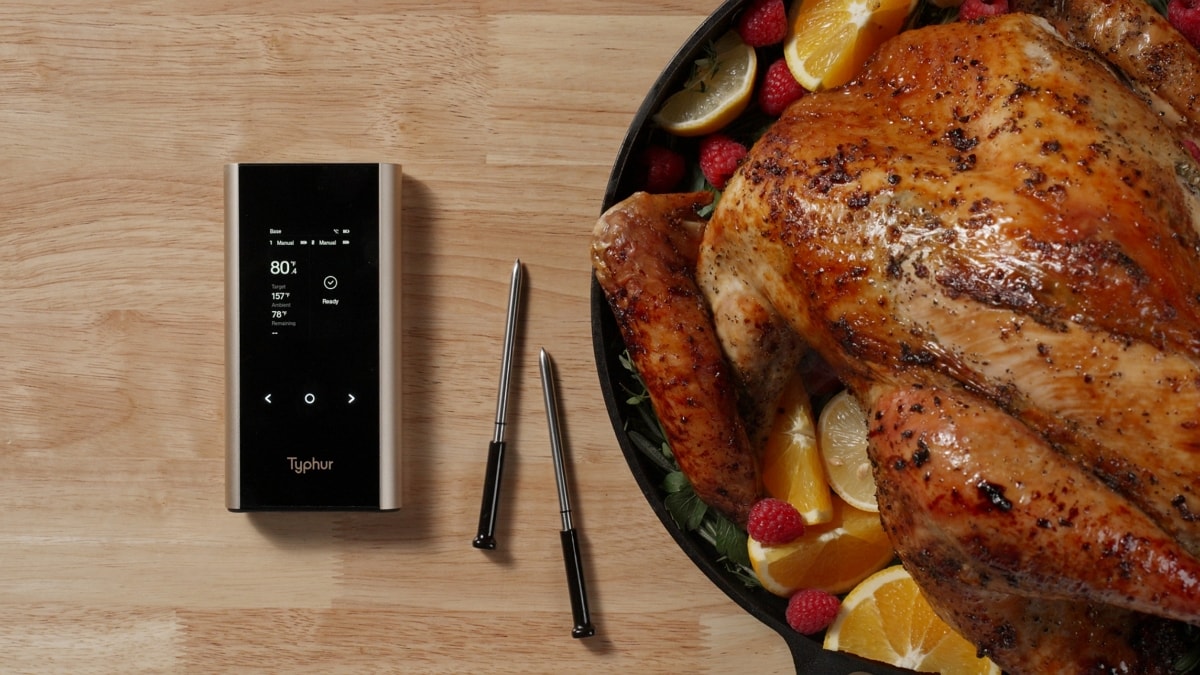

You need to update your:
FAQs Regarding Putting Thermometer in Turkey.
In section:
Is turkey done at 165 or 180?
There is a typo of 175° instead of 157° as discribed in the instructions above.
Thanks for heads up! Can’t wait to try this for my next holiday feast!
No pictures??
Just updated a picture to show you how to place the probes in the turkey properly. Thanks for your heads up!